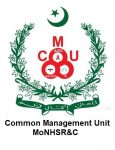National HIV and AIDS Strategic Framework‐2007 – 2012
During the last three decades, the HIV pandemic has entered our consciousness as an incomprehensible calamity. HIV and AIDS has already taken a terrible human toll, laying claim to millions of lives, inflicting pain and grief, causing fear and uncertainty and threatening economic devastation.
While Sub‐Saharan Africa remains the worst affected region in the world, there is increasing concern about the emergence of HIV and AIDS in Asia, which is home to more people than any other region of the world. Though the epidemic in Asia is less severe than in other parts of the world and rates of infection in the general population remain relatively low, it is clear that HIV has started spreading rapidly through the region and massive Asian population is increasingly at risk.
Pakistan is the second largest country in South Asia that stands only a few steps behind India and Nepal in terms of HIV epidemic. Despite many efforts, the HIV infection rate has increased significantly over the past few years and infact, the country has moved from a low prevalence to concentrated epidemic with HIV prevalence of more than 5% among injecting drug users (IDUs) in at least eight major cities. Other high‐risk groups, such as men who have sex with men (MSM), hijra sex workers (HSWs) and female sex workers (FSWs), also look set to reach this threshold level. Many bridging populations, totaling almost five million persons, are in direct sexual contact with these groups and are exposed to HIV infection through unprotected sexual activity. The heterogeneity and interlinking of high risk injecting and sexual behaviour, combined with low levels of HIV knowledge and prevention, and high levels of other sexually transmitted infections (STIs), indicates that HIV could spread rapidly to marriage partners or sex clients and result in generalized epidemic.
Pakistan Country Strategy for HIV Testing & Counselling based on Situation & Response Analysis.
The HIV Second Generation Surveillance in Pakistan – National Report Round IV 2011 confirmed rising (weighted) prevalence of HIV among people who inject drugs (36.7%), transgender (Hijra) population (7.3%) and to a lesser extent among male sex workers (3.1%) and female sex workers (0.8%). Additionally, localised epidemics with varying transmission dynamics were observed where a substantial number of HIV infections occurred among the general population. Yet, there is evidence that a significant number of those most at risk of contracting and transmitting HIV are not getting a test. It is also observed that not all who test receive their result. The reasons for this are multifaceted and include a lack of targeted promotion of testing and counselling, inappropriate location of services, lack of appropriate training of health workers and convoluted confirmatory testing processes. It is also observed that a disproportionate percentage of individuals from the key populations do not get the necessary care, support and treatment once they are diagnosed due to poor referral linkages.
HIV counselling and testing have been an important component of HIV prevention and care efforts in Pakistan, both in public (Government hospitals) and private (NGOs) sectors. However, limited coverage and often the quality of these services have yielded results, which are below expectations, with respect to increasing uptake of HTC and improving rates of return for results, and minimising “loss to follow-up” of newly diagnosed individuals. As increasingly ‘treatment’ is seen ‘as prevention strategy’ HIV testing and counselling, have become all the more significant as it is through this gateway that people access HIV treatment, care and prevention services. Well designed and well placed counselling and testing services can be the corner stone of successful HIV prevention programs in countries like Pakistan with concentrated epidemics.
PAKISTAN AIDS Strategy III 2015 - 2021
The Pakistan AIDS Strategy III 2015 – 2021 was developed by a team of consultants under the technical guidance and supervision of the National AIDS Control Programme, UNAIDS Pakistan and an expanded HIV Technical Working Group of the Country Coordination Mechanism. Prior to the development of the PAS III, a mid-term review of the four Provincial AIDS Strategies 2012 – 2016 was undertaken and recommendations for strengthening made. The PAS III is a consolidation of the four Provincial Strategies,and recommendations made by key stakeholders during the MTR process and country dialogues for the PAS IIIdevelopment (see III.2. Development of the PAS III).Provincial Secretaries of Health and Planning, or their representatives, endorsed MTR recommendations in the presence of the State Minister of Health, January 15th, 2015.
The purpose of the PAS III is to guide Pakistan’s overall national response for HIV and AIDS through 2020, through focused interventions with set targets, costs, roles and responsibilities. The successful implementation of PAS III involves multiple stakeholders to achieve priority Outcomes outlined in the Strategy. The Strategy focuses on allocating limited resources to scale up high-impact, high-value interventions such as HTC and treatment to reduce AIDS-related deaths and new HIV infections. Priorities in the PAS III have been identified to ensure maximum impact in reducing new infections, especially among key populations, improving treatment uptake and retention, and improving the quality of life of people living with HIV and AIDS in the context of limited financial and human resources.
The National Strategic Framework For HIV Treatment Care & Support in Pakistan 2007.
Pakistan’s HIV epidemic is concentrated among a few population sub-groups and has a low prevalence among the general population. This provides some time for HIV program managers and decision makers to plan and implement effective measures to control the spread of HIV to the general population. Unfortunately one of the ways with which individuals and communities identify with HIV (thereby, mainstreaming of the disease and taking action) is to see people suffering from it. In this regard most Pakistanis have rarely seen someone affected or infected with HIV and fail to draw the human connection including fully understanding the social, psychological, economic impacts of the disease.
HIV treatment and care differs from care of many other diseases in several ways. It is a chronic disease requiring lifelong treatment, its treatment has a narrow margin for deviations from the prescribed regimens, and successful treatment frequently requires comprehensive social support. There is no other disease where social support plays such a critical role in determining long term treatment success and sustainability.
Pakistan Communication Strategy for HIV-AIDS
Pakistan’s estimated HIV burden is low—around 0.1 per cent of the adult population — the country though, is facing a concentrated epidemic among People Who Inject Drugs (PWID). The country has a window of opportunity to act decisively to prevent the spread of HIV. Given linkages between PWID and other Key Populations (KP) at risk including male and female sex workers, Pakistan needs to scale up targeted interventions urgently to prevent the rapid rise in HIV prevalence among Key and Vulnerable population groups.
PAKISTAN AIDS Strategy IV 2021 - 2025
The Pakistan AIDS Strategy 2021-2025 (PAS IV) has been developed during a period in which the world has had a vivid reminder, in the form of the COVID-19 pandemic, of the power of unchecked epidemics to disrupt our lives. Fortunately, in the case of AIDS, we have the benefit of decades of experience and expertise which can be brought to bear on the urgent task of controlling the epidemic. Put simply; we know what works.
This strategy, and the four provincial strategies on which it is based, takes a hard look at the challenges that face us as we attempt to bring the AIDS epidemic under control in Pakistan, and proposes a re-energized response, taken to scale. The overarching aim is a 63% reduction in new infections by 2025. We will achieve this through precision-targeted interventions, testing and treating strategically, investing more effectively and sustainably, and innovating.

Have a question or need some help?
APLHIV provides a respectful and safe venue where a wide range of organizations with differing missions come together to share HIV-related information. Call us now at 0800-22209

